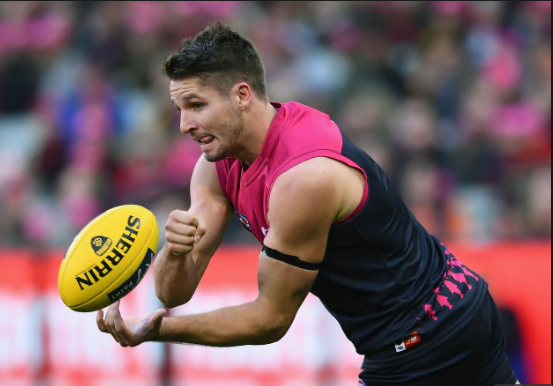22-year-old Demon’s player Jesse Hogan is recovering well after yesterdays’ operation sought a tumour removed following his testicular cancer diagnosis last Thursday.
The Melbourne forward will take indefinite leave from his AFL career but is expected to make a full recovery.
Not many people are aware that testicular cancer is the second most common cancer to affect men aged 18-39 and Hogan’s story could see a spark in more awareness about the disease for men.
Scott Viney was 40 years old when he was diagnosed with testicular cancer.
He said, “Laughter, positive thinking and a healthy, active lifestyle is what got me through.
“The first thing I said when the doctor told me I had cancer was ‘you beauty, more time off work’.
Staying strong mentally goes hand in hand with staying fit and healthy and it’s what helped me overcome the disease.”
More than 90 percent of men who are treated will be cancer free especially if caught in the early stages.
This is the case for many sporting greats who have defeated their battles and went on to become prominent names for cancer advocacy.
Lance Armstrong, Bob Champion and John Hartson are three sporting stars who have all beat their diagnosis of testicular cancer and created their own foundations to advocate and raise millions of dollars for the fight against cancer.
Australia saw 721 new cases of testicular cancer diagnosed in 2013, The Bob Champion Cancer Trust, established in 1983 raises research funds for cases such as these.
Champion, a popular former Jump Jokey received his diagnosis in 1979 as he was at the top of his career.
He overcame his battle and went on to create The Bob Champion Cancer Trust, the largest male dedicated research facility in Europe.
Footballer John Hartson’s diagnosis was in July of 2009 where at 34 years old he underwent emergency brain surgery after his testicular cancer was found to have spread to his brain and lungs.
He too defeated the cancer and founded the John Hartson Foundation, a cancer charity for testicular cancer that raises money to support those affected.
Before his notoriety as a serial drugs cheat, Lance Armstrong was known as the American cyclist who held the title of seven times Tour de France winner.
At 25-years-old his late stage testicular cancer has spread to his abdomen, lungs and brain and he was left with a survival rate of less than 50 percent.
He overcame this and has since founded the Livestrong foundation, formerly known as the Lance Armstrong foundation.
Over the past 30 years the rate of men diagnosed with testicular cancer has more than doubled.
The risk of death is only around 1 in 5000 as most times the cancer is successfully treated and, if the cancer has not spread beyond the testicles there’ a survival rate of 99%.
Cancer council Australia’s health professionals say to “Simply go and get checked and if you have any health concerns, please go and see your oncologist.”
Feature Image via Quinn Rooney via Getty Images
Infographic Information – Piktograph https://www.cancer.org/cancer/testicular-cancer/about/key-statistics.html
Information –
http://www.afl.com.au/news/2017-05-16/jesse-hogan-dignosed-with-testicular-cancer
http://www.cancer.org.au/about-cancer/types-of-cancer/testicular-cancer.html#jump_1
http://www.pamf.org/urology/testicancer.html
http://www.theweek.co.uk/64385/six-athletes-who-overcame-testicular-cancer

